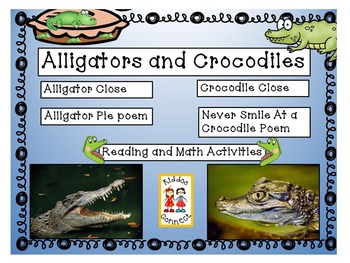Close Informational Reading - Alligators and Crocodiles with Activities
- PDF
Description
Kiddos Connect has created close reading and informational text passages that focus on:
*Alligators
*Crocodiles
We have included WOW! words and Questions (text dependent and BIG thinking).
Each close has a variety of writing formats:
*KWL
*Can, Have, Is
*A Picture and Two Facts
*Bubble Map
*Comparison Charts
*A factual take-home book for each animal
For extensions we have provided:
*Alligator Pie poem
-Take-home book
-Class book
*Never Smile At A Crocodile poem
-Take-home book
-Class book
*Literacy activities:
-Word families - printables
-Alligator Squeeze - printable (letter practice or letter/sound
practice
-Letter Fluency - printables (upper and lower case)
* Math activities
-Comparing numbers - printables (more than, less than)
-Comparing numbers - printables (greater than, less than, equal
to)
-Number fluency - printables
-Tens/Ones - printables
-Gator Group - printables (adding fluently to 5)
-Croc Club - printables (subtracting fluently from 5)





